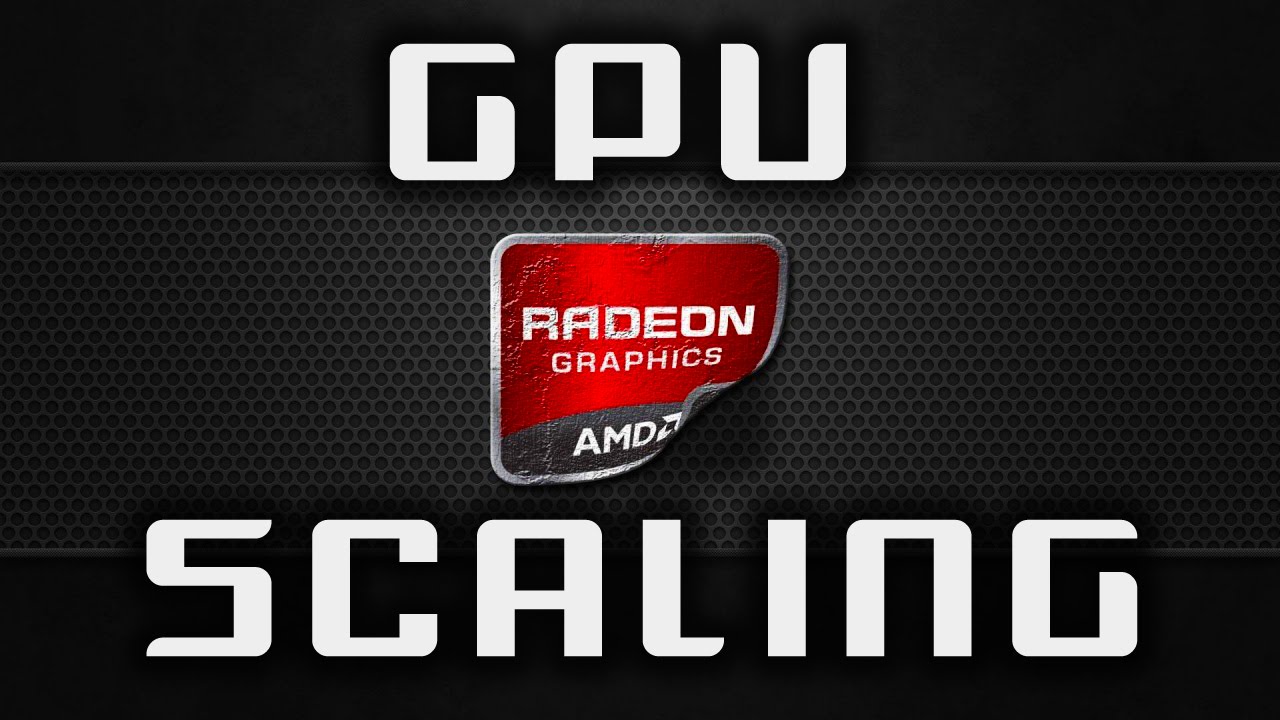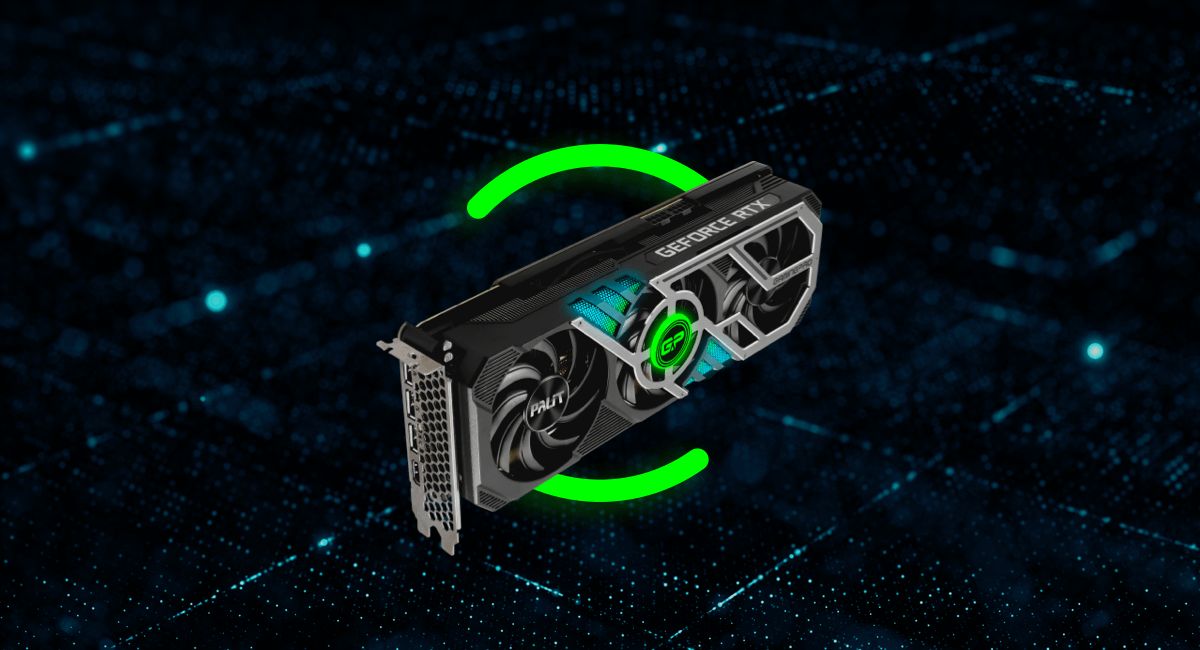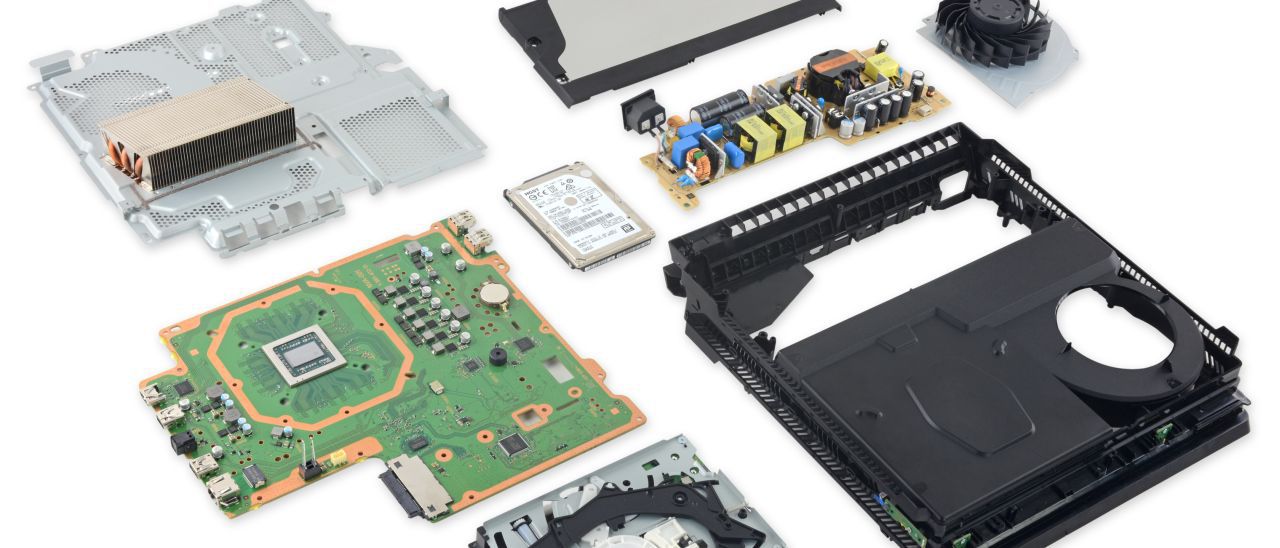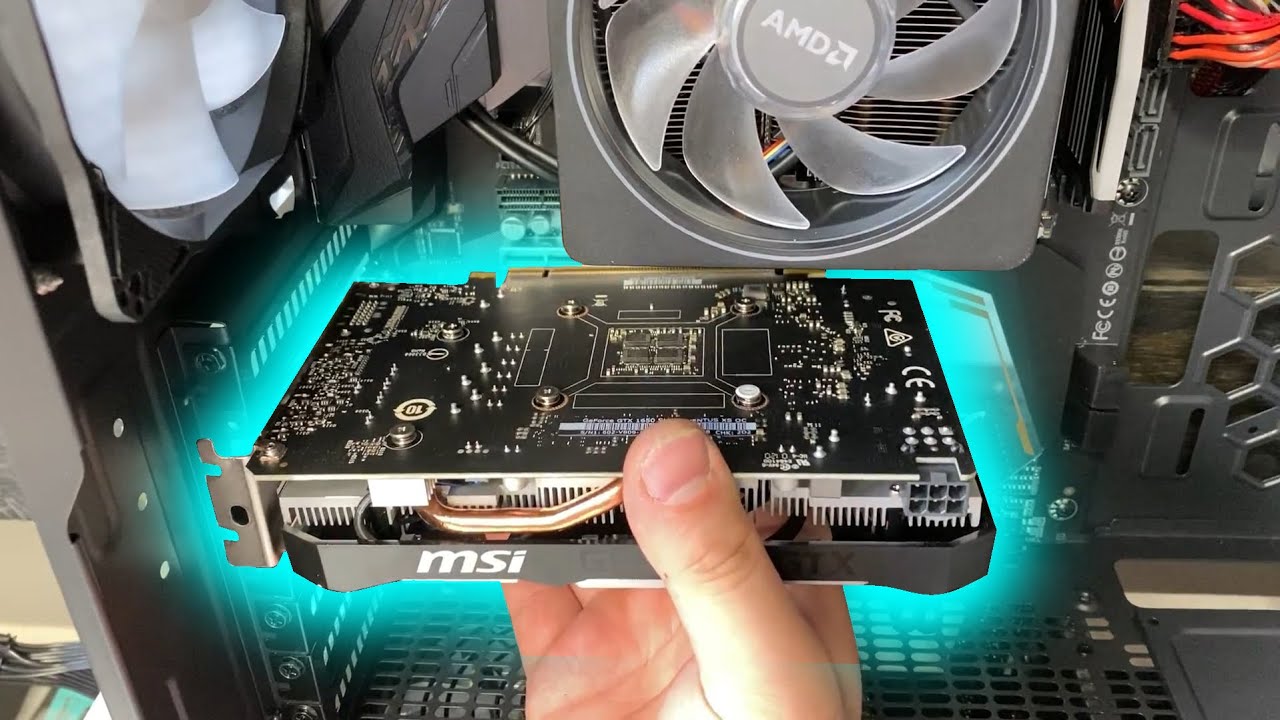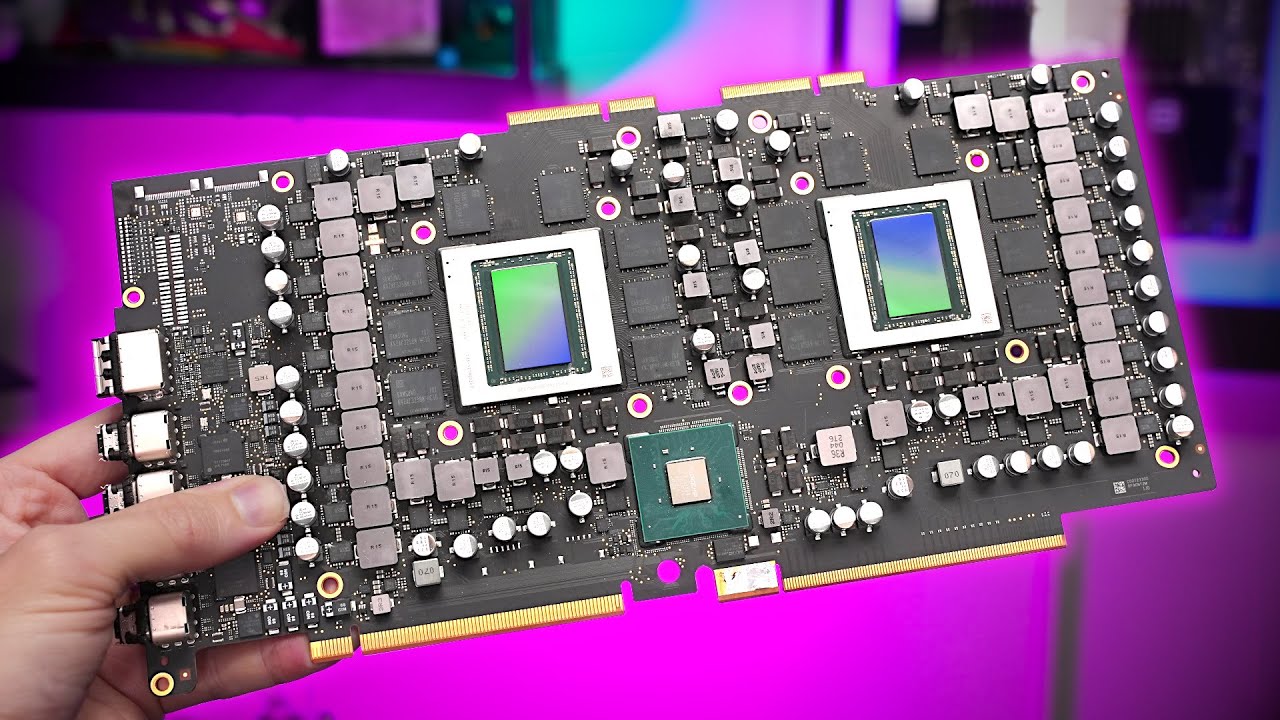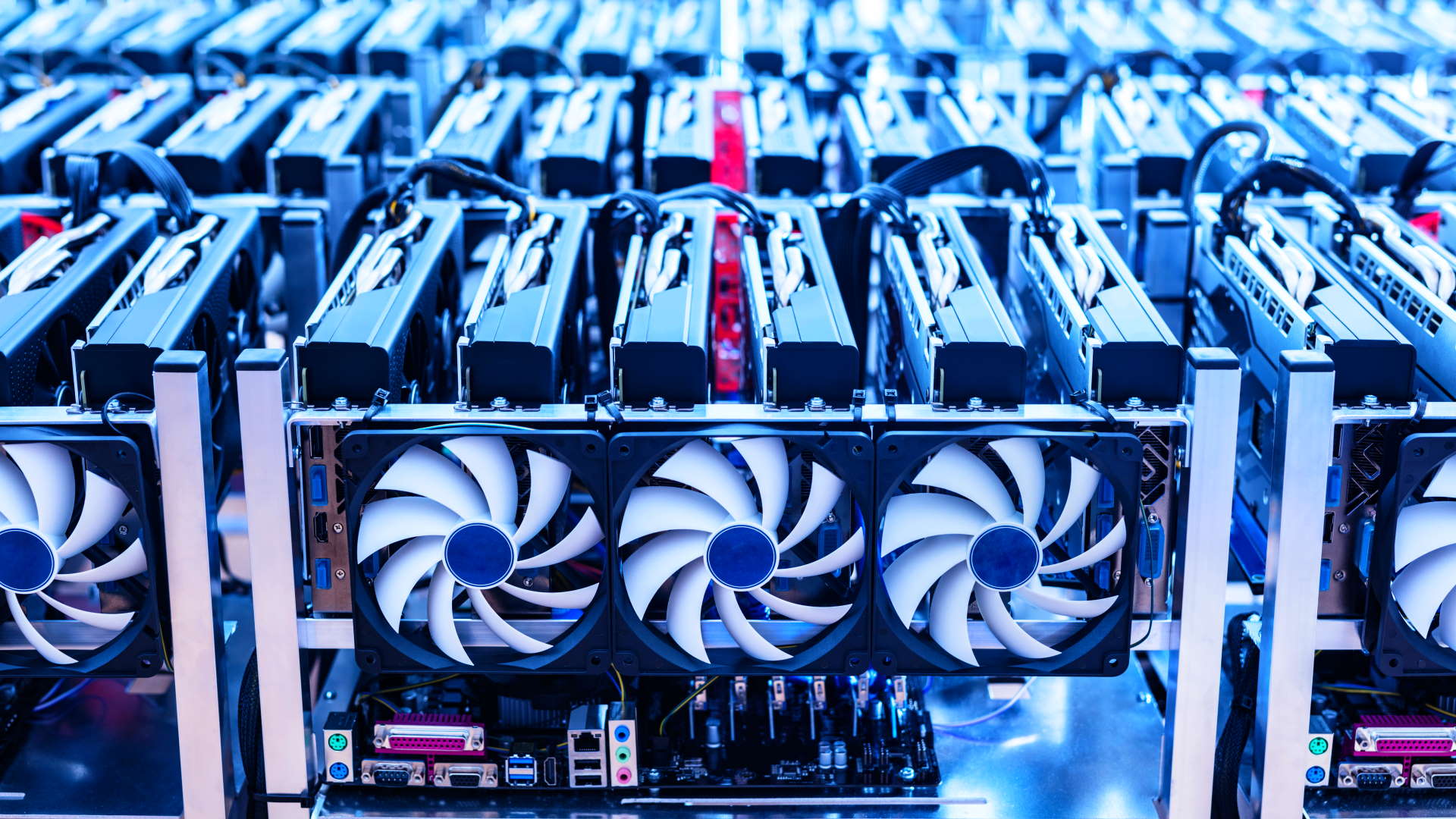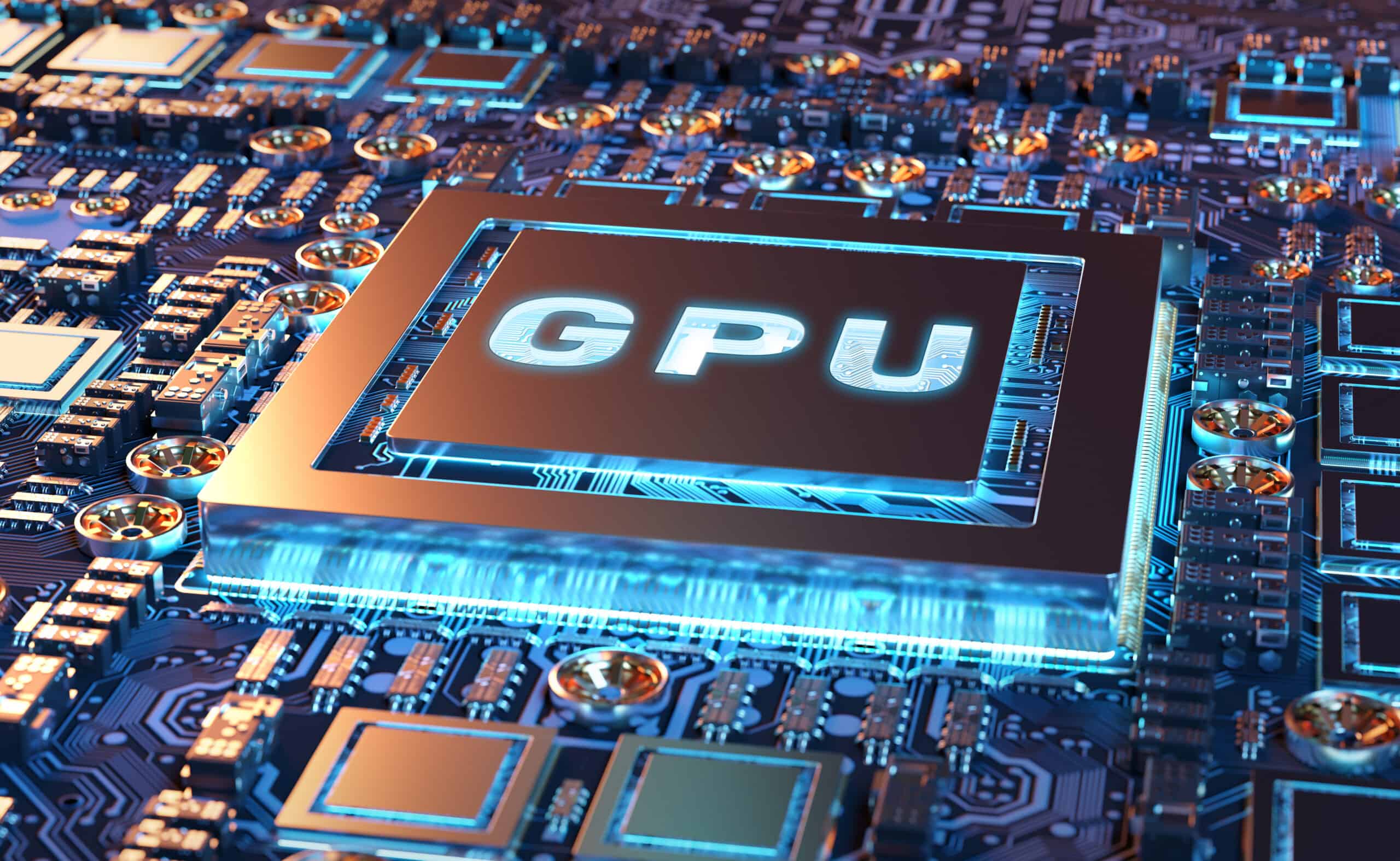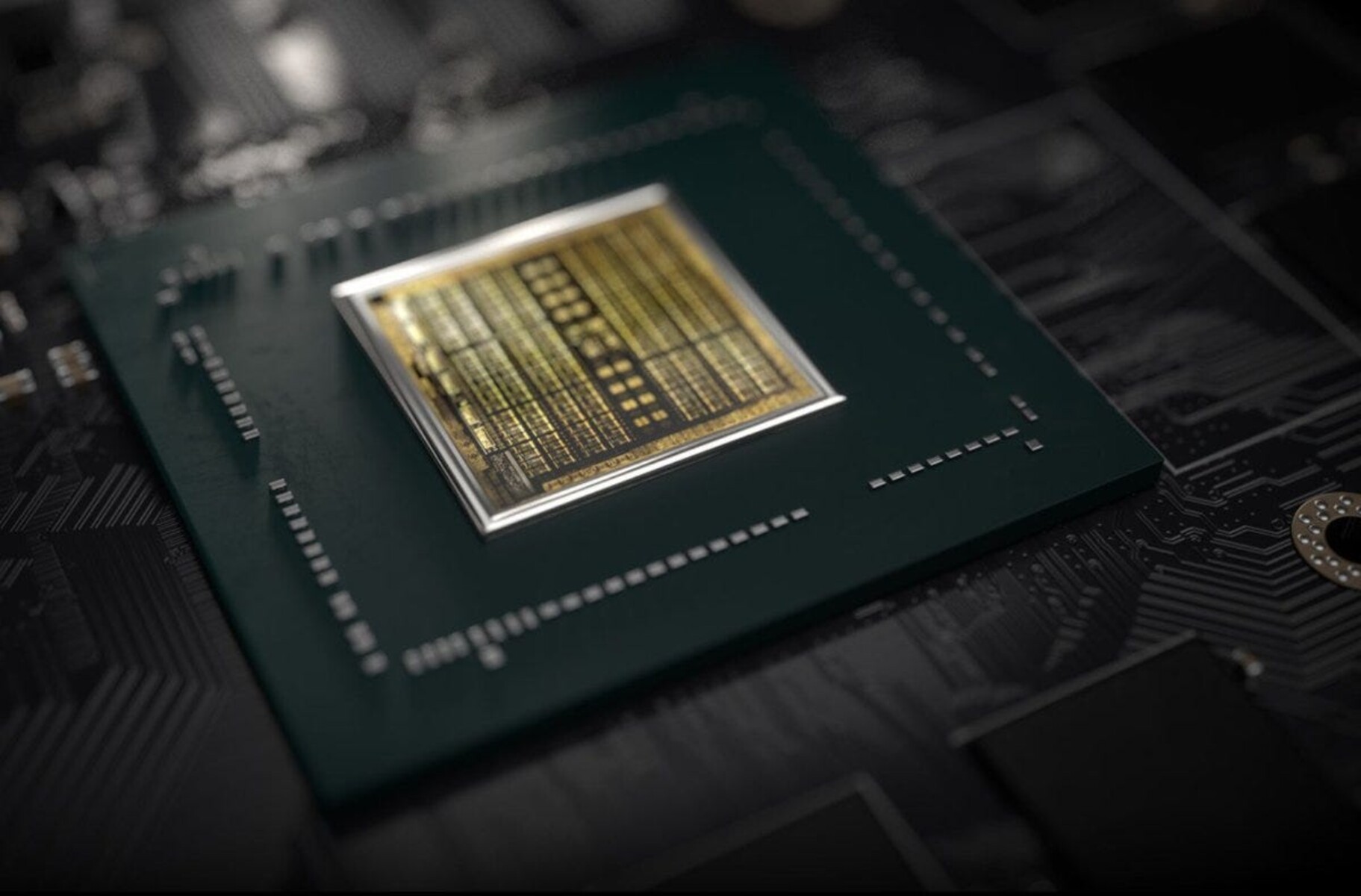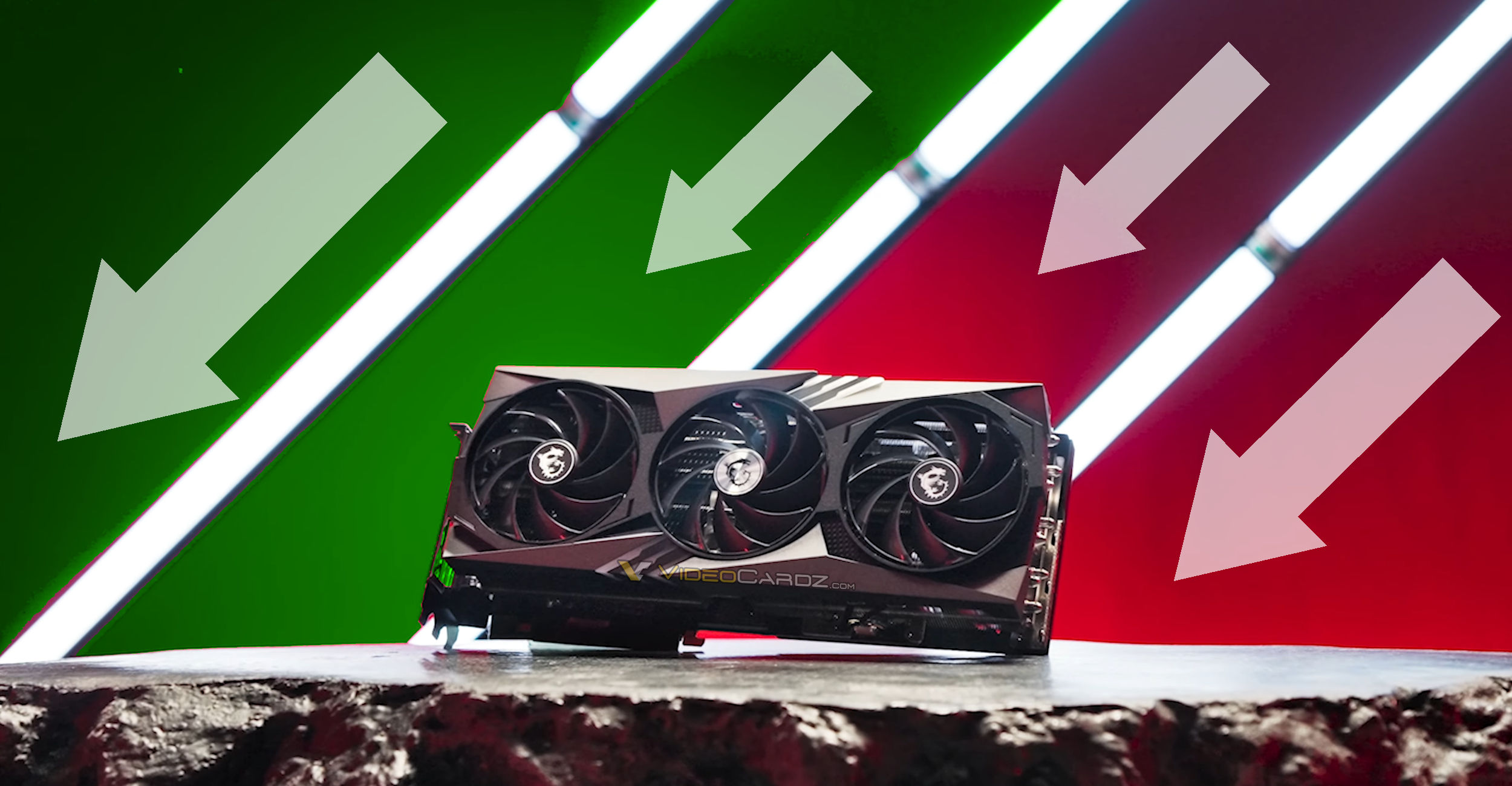What Is GPU Scaling
GPU scaling is a technology that allows the display of a lower resolution image or video on a higher resolution display without sacrificing image quality. It is a feature commonly found in graphics processing units (GPUs) and is used to ensure that the content being displayed on a monitor is properly resized and scaled to fit the screen.
When you have a computer with a high-resolution display, such as a 4K monitor, but the content you are trying to view is in a lower resolution, such as 1080p or lower, GPU scaling comes into play. Instead of stretching or distorting the image to fit the screen, GPU scaling resizes the content so that it is displayed correctly and in the best possible quality.
This technology is particularly useful in situations where you want to play a game or watch a video that doesn’t natively support your display’s resolution. Without GPU scaling, lower resolution content may appear blurry, pixelated, or improperly sized on a higher resolution screen.
Furthermore, GPU scaling is not limited to just scaling up lower resolution content. It can also be used to scale down higher resolution content to fit on lower resolution displays. This means that you can enjoy the benefits of a high-resolution display, even if your computer or graphics card can’t handle running games or videos at those resolutions.
Overall, GPU scaling is a valuable feature that ensures optimal image quality and display compatibility. It allows you to enjoy content on a higher resolution monitor without compromising image clarity or size, providing a more immersive and enjoyable experience.
Introduction
With the rapid advancement of technology, graphics processing units (GPUs) play a crucial role in delivering stunning visual experiences across various digital platforms. Whether you are a gamer, a multimedia enthusiast, or a professional working with graphics-intensive applications, having a clear and crisp display is of utmost importance. This is where GPU scaling comes into the picture.
In this article, we will explore what GPU scaling is, its importance, how it works, and the benefits it brings. Additionally, we’ll delve into its relevance in different scenarios such as gaming, multimedia content, productivity, and multi-monitor setups. Furthermore, we’ll provide practical insights on how to enable GPU scaling to optimize your visual experience.
GPU scaling is a technology that allows you to adapt the resolution of content to match the capabilities of your display. It ensures that images and videos are displayed correctly and without distortion, regardless of their original resolution. This means that even if you have a high-resolution display, GPU scaling enables you to view lower resolution content while maintaining image quality.
Whether you have a 4K monitor, a Full HD display, or even a lower resolution screen, GPU scaling ensures that the content fits your screen perfectly. It prevents images from appearing stretched, blurry, or squeezed due to the mismatch between the original content resolution and the display’s native resolution.
In the following sections, we will explore the intricacies of GPU scaling and its practical implications in various aspects of modern computing. From enhancing gaming visuals to optimizing multimedia content and productivity, GPU scaling is a powerful tool that can elevate your overall visual experience.
So buckle up and get ready to dive into the world of GPU scaling, where stunning visuals are the norm and every pixel counts.
What is GPU Scaling?
GPU scaling is a technology that allows the display of a lower resolution image or video on a higher resolution display without sacrificing image quality. It is a feature commonly found in graphics processing units (GPUs) and is used to ensure that the content being displayed on a monitor is properly resized and scaled to fit the screen.
When you have a computer with a high-resolution display, such as a 4K monitor, but the content you are trying to view is in a lower resolution, such as 1080p or lower, GPU scaling comes into play. Instead of stretching or distorting the image to fit the screen, GPU scaling resizes the content so that it is displayed correctly and in the best possible quality.
This technology is particularly useful in situations where you want to play a game or watch a video that doesn’t natively support your display’s resolution. Without GPU scaling, lower resolution content may appear blurry, pixelated, or improperly sized on a higher resolution screen.
Furthermore, GPU scaling is not limited to just scaling up lower resolution content. It can also be used to scale down higher resolution content to fit on lower resolution displays. This means that you can enjoy the benefits of a high-resolution display, even if your computer or graphics card can’t handle running games or videos at those resolutions.
Overall, GPU scaling is a valuable feature that ensures optimal image quality and display compatibility. It allows you to enjoy content on a higher resolution monitor without compromising image clarity or size, providing a more immersive and enjoyable experience.
Why is GPU Scaling Important?
GPU scaling plays a pivotal role in ensuring a seamless visual experience across different devices and resolutions. Here are several reasons why GPU scaling is important:
1. Display Compatibility: GPU scaling enables content to be displayed correctly on monitors with different resolutions. It eliminates the need for manual adjustments or cumbersome settings to fit the content on the screen. This compatibility ensures that images and videos are presented in their intended form regardless of the display’s native resolution.
2. Enhances Image Quality: GPU scaling maintains the image quality when resizing or scaling content to fit a higher or lower resolution display. By preserving sharpness, clarity, and aspect ratio, GPU scaling prevents the distortion and blurriness that may occur when content is forced to fit a different screen size or resolution.
3. Improves Gaming Experience: GPU scaling is especially crucial for gamers. It allows them to play games at a lower resolution while still having them upscaled and displayed on a higher resolution monitor. This ensures that games run smoothly and look visually appealing, even on displays with higher pixel densities.
4. Multimedia Compatibility: Whether you are watching movies, streaming videos, or editing multimedia content, GPU scaling ensures that the visuals are presented in the best possible quality. It allows lower resolution videos or images to be upscaled for optimal viewing without sacrificing image clarity.
5. Productivity Enhancement: For professionals working with graphics-intensive applications or multitasking across multiple displays, GPU scaling is vital. It ensures that content displayed on different monitors, with varying resolutions, remains consistent and accurately scaled to fit each screen. This improves workflow efficiency and reduces eyestrain.
6. Multi-Monitor Setups: GPU scaling is essential for users with multi-monitor setups. It assists in aligning the content seamlessly across different screens with various resolutions. Content spanning multiple displays appears consistent, with no variation in image size or aspect ratio, providing a cohesive viewing experience.
Overall, GPU scaling is critical because it allows for smooth compatibility, better image quality, and an optimal viewing experience across a wide range of resolutions and devices. Regardless of the content source or display capabilities, GPU scaling ensures that images and videos are displayed correctly and in the highest possible quality.
How does GPU Scaling Work?
GPU scaling works by utilizing the processing power of the graphics processing unit (GPU) to resize and scale the content to fit the display’s resolution. It employs specific algorithms to adjust the image or video dimensions without compromising on image quality. Here’s a breakdown of how GPU scaling operates:
1. Content Detection: When you connect a monitor to your computer, the GPU automatically detects the display’s native resolution and adjusts its settings accordingly. It recognizes the resolution difference between the content and the display to determine the scaling requirements.
2. Scaling Algorithms: GPU scaling employs various scaling algorithms to resize and scale the content. These algorithms ensure that the original proportions, aspect ratios, and fine details are preserved, resulting in a visually appealing image or video. Popular scaling algorithms include bilinear, bicubic, and Lanczos algorithms.
3. Upscaling: In situations where the content has a lower resolution than the display, GPU scaling performs upscaling. It enlarges the image or video to fit the screen size while maintaining sharpness and clarity. The scaling algorithm determines how the pixels are interpolated and upscaled for the best visual representation.
4. Downscaling: Conversely, GPU scaling also handles downscaling when the content has a higher resolution than the display. It reduces the image or video size to fit the screen without sacrificing image quality. The scaling algorithm determines how the pixels are averaged and downscaled to ensure smooth visuals and details.
5. Image Enhancement: Alongside scaling, GPU scaling may incorporate additional image enhancement techniques, such as sharpening or noise reduction. These enhancements help improve the overall visual quality, ensuring that the upscaled or downscaled content appears crisp and well-defined.
6. Display Output: Once the scaling and image enhancements are applied, the GPU sends the adjusted content to the display for rendering. The output is optimized to fit the monitor’s resolution, resulting in a properly scaled image or video that fills the screen without distortion or blurriness.
Overall, GPU scaling relies on sophisticated algorithms and the computational power of the GPU to resize and scale content while maintaining optimal image quality. It ensures that the content is displayed correctly on monitors with different resolutions, enhancing the visual experience across various devices and display setups.
Benefits of Using GPU Scaling
GPU scaling offers several benefits that enhance the visual experience and usability across different devices and resolutions. Let’s explore some of the advantages:
1. Optimal Display Compatibility: GPU scaling ensures that content is properly fitted and displayed on screens with varying resolutions. It eliminates the need for manual adjustments or custom settings, allowing content to be viewed seamlessly on any display without distortion or blurriness.
2. Enhanced Visual Quality: By resizing and scaling content to match the display’s resolution, GPU scaling maintains image quality, sharpness, and clarity. It prevents images or videos from appearing stretched or pixelated, providing a visually pleasing experience even when dealing with different resolution sources.
3. Improved Gaming Experience: Gamers benefit from GPU scaling as it enables them to play games at a lower resolution while still enjoying a scaled-up view on a higher resolution monitor. This feature ensures smoother gameplay with reduced input lag, providing a more immersive gaming experience.
4. Seamless Multimedia Viewing: When watching videos or viewing multimedia content, GPU scaling allows for optimal display regardless of the source resolution. It ensures that videos are upscaled or downscaled with minimal quality loss, delivering better clarity and detail for an enjoyable multimedia experience.
5. Increased Productivity: For professionals working with graphics-intensive applications or utilizing multi-monitor setups, GPU scaling improves productivity. It allows content to be scaled seamlessly across various displays, eliminating the need for manual adjustments and ensuring consistent image size and layout.
6. Compatibility with Legacy Content: GPU scaling is beneficial when dealing with older or legacy content that may have lower resolutions. It enables these older videos, images, or applications to be displayed correctly and enlarged without loss of quality on higher resolution screens.
7. Multi-Monitor Flexibility: GPU scaling facilitates multi-monitor setups by ensuring consistent image scaling across different displays. Content can span multiple screens without visual inconsistencies, making it easier for users to work with multiple applications simultaneously.
Overall, GPU scaling provides a range of benefits including display compatibility, enhanced visual quality, improved gaming experiences, seamless multimedia viewing, increased productivity, and support for multi-monitor setups. This technology guarantees that content is displayed optimally, regardless of the source resolution, resulting in a more enjoyable and immersive visual experience.
Types of GPU Scaling
GPU scaling offers different types of scaling techniques to accommodate various display and content scenarios. These scaling methods allow you to choose the most suitable option for your specific needs. Here are some common types of GPU scaling:
1. Maintain Aspect Ratio: This type of scaling preserves the aspect ratio of the content, ensuring that it is displayed in its original proportions. The content is resized to fit the screen while maintaining the same aspect ratio, resulting in no distortion or stretching. If the content and display aspect ratios do not match, black bars may appear at the edges to maintain the original content’s dimensions.
2. Full Screen: Full-screen scaling stretches or expands the content to fully fill the screen, regardless of the aspect ratio. This type of scaling can lead to some distortion or a loss of original proportions, as the content is stretched to fit the entire screen. It is commonly used when maintaining the aspect ratio is not a priority, or when dealing with content that is not sensitive to distortion.
3. Centered: Centered scaling positions the content in the center of the screen without stretching or distorting it. It displays the content at its native resolution and places it in the center of the screen, leaving black bars around the content if the display’s resolution is higher. This type of scaling is often used when maintaining the original content dimensions is essential.
4. Customized Scaling: Some GPU drivers or software may offer additional scaling options that allow you to customize how the content is displayed. These options may include options to adjust the scaling ratio, overscan, or underscan settings. Customized scaling provides more flexibility for users to fine-tune the display settings based on their preferences and specific display resolutions.
5. GPU-Accelerated Scaling: GPU-accelerated scaling utilizes the processing power of the GPU to perform the scaling operations efficiently. This type of scaling offloads the scaling process from the CPU to the GPU, resulting in faster and smoother scaling effects. GPU-accelerated scaling is particularly useful when dealing with content that requires real-time scaling, such as gaming or video playback.
6. Virtual Super Resolution (VSR) / Dynamic Super Resolution (DSR): VSR and DSR are advanced scaling technologies found in some GPUs that allow higher-resolution rendering and scaling down to match the display’s resolution. These technologies simulate a higher display resolution, allowing for improved image quality and detail. They are commonly used in gaming to provide more immersive visuals by supersampling the content and effectively scaling it down to fit the display.
These are just a few examples of the types of GPU scaling available. The availability and specific features of different scaling methods may vary depending on the GPU drivers and software you are using. It’s important to explore your GPU’s documentation or control panel settings to find the available scaling options and choose the one that best fits your display and content requirements.
GPU Scaling and Gaming
GPU scaling plays a crucial role in gaming by providing a seamless experience when playing games on displays with different resolutions. Here are some benefits and considerations of GPU scaling in the gaming realm:
1. Optimal Resolution Adaptation: GPU scaling allows gamers to play games at a lower resolution while still enjoying an upscaled view on a higher resolution monitor. This ensures that games remain visually pleasing and immersive, even if the game doesn’t natively support the display’s resolution.
2. Smoother Gameplay and Reduced Input Lag: GPU scaling ensures that games run smoothly, even when played at a lower resolution. By upscaling the content, GPU scaling reduces the strain on the GPU, leading to improved frame rates, reduced input lag, and a more responsive gaming experience.
3. Compatibility with Older Games: For gamers who enjoy playing older titles or games with lower resolution support, GPU scaling proves to be highly valuable. It enables these games to be displayed correctly and upscaled, enhancing the visual quality and overall gaming experience on modern high-resolution displays.
4. Multi-Monitor Gaming: GPU scaling is essential for gamers who utilize multi-monitor setups for immersive gaming experiences. It ensures that games are displayed consistently across multiple screens with varying resolutions, preserving the correct aspect ratio and preventing any visual distortions or mismatched scaling between monitors.
5. Supersampling and Downsampling: Some advanced GPU scaling features such as Virtual Super Resolution (VSR) and Dynamic Super Resolution (DSR) allow for supersampling and downsampling. These technologies simulate a higher display resolution and render the game at a higher resolution before scaling it down to the display’s resolution. This results in improved image quality, increased detail, and enhanced anti-aliasing effects.
6. Customization Options: GPU scaling often offers customization options, allowing gamers to fine-tune scaling settings based on their preferences and the specific game they are playing. This customization can include options to adjust scaling ratios, overscan/underscan settings, or even the ability to create custom profiles for different games.
It’s important to note that GPU scaling for gaming may introduce a slight reduction in image quality or introduce minor input lag due to the upscaling process. However, the benefits it brings, such as compatibility with various resolutions, improved overall performance, and the ability to enjoy older games on modern displays, make GPU scaling an invaluable feature for gamers.
GPU Scaling and Multimedia Content
GPU scaling plays a significant role in optimizing the viewing experience of multimedia content, including videos, movies, and images, across different resolutions. Here are some key aspects to consider regarding GPU scaling and multimedia content:
1. Content Adaptation: GPU scaling ensures that multimedia content, regardless of its original resolution, is properly displayed on the screen without any distortion or loss of clarity. Whether you are watching a lower-resolution video on a high-resolution monitor or viewing an image with lower pixel density, GPU scaling adjusts the content to fit the screen, providing an optimal viewing experience.
2. Upscaling Lower-Resolution Content: When viewing lower-resolution videos, GPU scaling upscales the content to fit a higher-resolution display, resulting in a more enhanced and visually pleasing viewing experience. It helps prevent artifacts, blurriness, and pixelation, making the content appear sharper and more detailed on the screen.
3. Downsampling Higher-Resolution Content: GPU scaling also excels at downsampling higher-resolution content to fit a lower-resolution display. It reduces the resolution while preserving the image’s quality, ensuring that you can still enjoy high-resolution multimedia content on devices with limited display capabilities or smaller screens.
4. Aspect Ratio Preservation: GPU scaling maintains the aspect ratio of the multimedia content during the scaling process. This ensures that the content is displayed with its original proportions and prevents any stretching or distortion that may occur when content is forced to fit a different screen size or aspect ratio.
5. Image and Video Enhancement: In addition to scaling, GPU scaling often incorporates image and video enhancement techniques such as sharpening or noise reduction. These enhancements improve the overall visual quality and clarity of the content, making it more engaging and enjoyable to watch or view.
6. Compatibility with Legacy Content: GPU scaling is particularly useful when dealing with older or legacy multimedia content that may have lower resolutions. It allows for proper display and scaling of these files, ensuring that they can be viewed on modern high-resolution displays without any loss of quality or distorted visuals.
7. Real-Time Performance: GPU scaling leverages the processing power of the GPU to ensure real-time scaling of multimedia content. This enables smooth playback, especially when dealing with high-definition videos or resource-intensive formats, by offloading the scaling process from the CPU to the GPU.
Overall, GPU scaling greatly enhances the viewing experience of multimedia content by adapting it to different resolutions and display capabilities. Whether you are watching videos, movies, or viewing images, GPU scaling ensures that the content is displayed optimally, providing sharper visuals, preserving aspect ratios, and maintaining quality across various devices and screens.
GPU Scaling and Productivity
GPU scaling offers significant benefits for productivity across various scenarios, including working with graphics-intensive applications, multitasking, and utilizing multi-monitor setups. Let’s explore how GPU scaling enhances productivity:
1. Consistent Display Scaling: GPU scaling ensures that content displayed on multiple monitors, with different resolutions, is consistently scaled and properly aligned. This eliminates the need for manual adjustments and ensures that content remains consistent in terms of size, making it easier to work across multiple displays seamlessly.
2. Improved Workflow Efficiency: When working with graphic design or video editing applications, GPU scaling enables a more efficient workflow. It allows for accurate representation of content on high-resolution displays, enabling precise editing and reducing the need for constant zooming in and out to view fine details.
3. Optimal Presentation and Collaboration: GPU scaling is beneficial when presenting or collaborating on projects. It ensures that content displayed on a different resolution screen or projector is correctly scaled, allowing viewers to see the content clearly and without any distortion, regardless of the display’s capabilities.
4. Multitasking and Content Management: With GPU scaling, users can efficiently manage multiple applications and windows across different resolutions and monitors. It allows for smoother transition and resizing of windows, ensuring that content remains intact and readable when moving between displays with varying resolutions.
5. Graphics-Intensive Applications: GPU scaling proves essential when using graphics-intensive applications such as CAD software or 3D modeling tools. It ensures that the content-related objects, interfaces, and toolbars are rendered and displayed correctly, optimizing productivity and preventing any visual distortions or resizing issues.
6. Reduced Eyestrain: GPU scaling helps reduce eyestrain by ensuring that text and images are displayed at an optimal size and clarity. It eliminates the need to strain the eyes to read small text or view content that may appear too small on high-resolution screens, thus improving overall comfort during extended work sessions.
7. Customization Options: GPU scaling often provides customization options, allowing users to fine-tune display settings based on their preferences and specific productivity needs. These options can include adjusting scaling ratios, overscan/underscan settings, or creating custom profiles for different applications or scenarios.
Overall, GPU scaling significantly enhances productivity by providing consistent display scaling, improving workflow efficiency, optimizing multi-monitor setups, and reducing eyestrain. Whether working with graphics-intensive applications, multitasking, or managing multiple displays, GPU scaling ensures that content is displayed accurately and optimally, thereby boosting productivity and user experience.
GPU Scaling and Multi-Monitor Setups
GPU scaling plays a crucial role in optimizing multi-monitor setups, ensuring a seamless and consistent viewing experience across different displays. Let’s explore how GPU scaling benefits multi-monitor users:
1. Consistent Content Scaling: GPU scaling ensures that content displayed across multiple monitors with varying resolutions is consistently scaled and properly aligned. It eliminates the need for manual adjustments or custom settings, ensuring that content remains uniform in terms of size and aspect ratio across all screens.
2. Seamless Content Transition: GPU scaling enables smooth content transition between multiple monitors. When moving windows or applications from one screen to another, GPU scaling ensures that the content maintains its size and aspect ratio, preventing any sudden changes or resizing issues that may disrupt workflow and user experience.
3. Enhanced Multitasking: With GPU scaling, users can effectively multitask across multiple monitors. It allows for the efficient management of applications, windows, and content distribution, making it easier to work with multiple programs, reference materials, or monitor real-time data, thus boosting productivity.
4. Homogeneous Visual Experience: GPU scaling ensures that the visuals across all monitors appear uniform and consistent. Whether displaying images, videos, or applications, GPU scaling maintains the same level of image quality, clarity, and sharpness, regardless of the individual monitor’s resolution.
5. Compatibility with Different Resolutions: GPU scaling enables the use of monitors with different native resolutions in a multi-monitor setup without visual conflicts. It allows lower resolution monitors to display content correctly when connected alongside higher resolution monitors, ensuring that images, text, and graphics look visually cohesive across the entire setup.
6. Customization Options: GPU scaling often provides customization options to fine-tune the display settings based on individual preferences and requirements. This may include options to adjust scaling ratios, overscan/underscan settings, or the ability to create custom profiles for different multi-monitor configurations, giving users more control over their setups.
7. Boosted Productivity: GPU scaling enhances productivity in multi-monitor setups by providing consistent content scaling and a seamless transition between displays. The ability to view and access multiple applications or reference materials simultaneously without compromising image quality improves workflow efficiency and overall user experience.
In summary, GPU scaling is pivotal to maximizing the benefits of multi-monitor setups. It ensures consistent content scaling, seamless transitions, and compatibility across varying resolutions, enhancing multitasking capabilities and creating a more visually cohesive experience for users working across multiple screens.
How to Enable GPU Scaling
The process of enabling GPU scaling may vary depending on your GPU manufacturer and graphics driver software. However, the following steps outline a general approach to enable GPU scaling:
1. Access Graphics Driver Control Panel: Open your graphics driver control panel. This can usually be done by right-clicking on the desktop and selecting the graphics driver control panel or by finding the control panel application in your system’s settings.
2. Locate Display Settings: Look for display or resolution settings within the graphics driver control panel. This is where you will find the options related to GPU scaling.
3. Enable GPU Scaling: Within the display settings, look for an option to enable GPU scaling. The option might be labeled “GPU Scaling,” “Scaling Mode,” or similar. Enable this option to activate GPU scaling functionality.
4. Choose the Scaling Mode: Once GPU scaling is enabled, you will likely have the option to select a scaling mode. Common options include maintaining aspect ratio, full-screen scaling, centered scaling, or custom scaling. Choose the mode that best suits your needs and preferences.
5. Adjust Scaling Settings: Depending on your GPU driver, you might have additional settings to fine-tune the scaling process. These settings can include adjusting scaling ratios, overscan/underscan settings, or creating custom profiles for different applications or monitor setups. Explore these settings to customize the scaling experience to your liking.
6. Apply and Save Settings: Once you have enabled GPU scaling and adjusted the settings, apply and save the changes. The new settings should take effect immediately or after you restart your system.
7. Test and Verify: To ensure that GPU scaling is functioning as intended, test it by displaying content with different resolutions on your screen. Confirm that the content is properly scaled and displayed without distortion or blurriness. Make any necessary adjustments in the GPU scaling settings if needed.
8. Update Graphics Driver: It is recommended to keep your graphics driver up to date to access the latest features and improvements, including GPU scaling. Visit the website of your GPU manufacturer to download and install the latest driver version compatible with your system.
Remember, the exact steps and available options for enabling GPU scaling may differ depending on your specific GPU and its driver software. Refer to the documentation or support resources provided by your GPU manufacturer for more detailed instructions tailored to your setup.
Conclusion
GPU scaling is a powerful technology that enhances the visual experience across different devices and resolutions. Whether you are a gamer, a multimedia enthusiast, or a professional working with graphics-intensive applications, GPU scaling proves to be a valuable feature with numerous benefits.
By properly resizing and scaling content, GPU scaling ensures that images, videos, and applications are displayed correctly on screens with varying resolutions, eliminating distortion and maintaining optimal image quality. It allows users to enjoy content on high-resolution monitors without compromising clarity or visual integrity.
In gaming, GPU scaling enables seamless gameplay by upscaling lower resolution content and providing an immersive experience on higher resolution displays. It also facilitates compatibility with older or legacy games that may not natively support modern resolutions.
For multimedia enthusiasts, GPU scaling optimizes the viewing experience by adapting videos, movies, and images to fit the screen while preserving image quality. It allows for the enjoyment of high-resolution multimedia content, even on devices with lower display capabilities.
Furthermore, GPU scaling is a boon for productivity, especially when working with graphics-intensive applications or utilizing multi-monitor setups. It provides consistent content scaling, seamless transitions, and ensures compatibility across different resolutions, enhancing workflow efficiency and reducing eyestrain.
To enable GPU scaling, users can navigate the graphics driver control panel, locate display settings, and enable the GPU scaling option. Scaling modes can be customized based on personal preferences, with additional settings available for fine-tuning the scaling process.
In conclusion, GPU scaling is a vital technology that enhances display compatibility, image quality, and user experience across a variety of scenarios. Whether for gaming, multimedia content, or productivity, GPU scaling ensures that content is optimally displayed, providing a visually pleasing and seamless experience for users.







